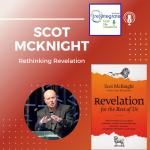Are you a leader?
You’re a leader if you’re responsible for moving a group of people from here to there, from where you are now to the ideal future. Leadership is responsibility. Leadership is owning a strategic forward movement. Leadership is taking people somewhere.
Are you a leader who needs resilience?
Resilience is the ability to bounce back in the face of failure, adversity, and stubborn problems. It’s hard to imagine a scenario where a leader doesn’t need resilience. Leaders get people to win by doing hard things. Difficult is baked into every worthwhile leadership assignment. The post-pandemic world is one that is hard on leaders–with intractable economic, social, and political challenges. It seems that resilience is even more in demand.
How would you rate your current state of leadership resilience?
Rate your level of leadership on a scale of 1 to 10 (10 being solid as a rock and 1 being nonexistent.)
Here are some signs you score a one. You are always exhausted. You never really do anything well–everything is half-baked. Great people are leaving the entity you lead for not-so-great reasons. Joy, gratitude, hope, and healthy ambition are distant memories. You’ve been stuck on the same problems, the same barriers, the same lack of innovation for more than a year. You are missing targets–performance goals for yourself and your team, for which you are accountable. You’d take an exit–almost any exit if it came along.
Here are some signs you score a ten. You deliver a nonanxious presence in the face of the anxiety of others. You’re sleeping well. You consistently find the opportunity in setbacks, headwinds, and interpersonal conflicts. You have a secure sense of self and purpose. You know your greatest contributions. You consistently excede expectations. You deliver the kinds of results you are expected to produce. You say no nicely and strategically. Talented and capable people want to work with you.
Let’s keep score. How resilient are you: 1 to 10?
Authentically Embracing Normal
Very few of us are 10s on the resilience scale. Even when we are, that status is temporary. A new season, a new market, and a fresh turn of global or cultural events and we have to swim harder to gain ground against the new current.
Very few of us are 1’s on the scale. Even if you’re burned out, depressed, and under a pile, there’s usually some flicker of hope, commitment, or drive that keeps you moving, even if moving is walking with a limp.
Normal is to live somewhere in the middle most of the time.
The good news is this: we can take steps to move our score in a positive direction and keep it on the upside of the continuum.
A Tested Paradigm
What follows is a model for executive resilience. It spills over and creates organizational resilience. This model was born and refined over a decades-long run in the commercial real estate industry. My colleague and friend, David Ridley, used this model to break into the real estate funds management business. It took him from a team of 2 to over 400, from 1 client to 500, and from no assets under management to $90 billion currently. Today, years after his retirement, Invesco Real Estate continues to grow and be viewed as the gold standard in its industry. As consultants and trainers, we have applied this model to for-profits and nonprofits alike, finding that it brings powerful simplicity and common language to the quest for staying power in any worthy endeavor.
The Secret to Executive Resilience
We illustrate the model with the following five-part diagram:

Client Success. In the diagram, we call them clients. You may call them by another name: customers, members, congregants, beneficiaries, patients, or constituents. In our vocabulary “client” refers to the people you must serve in order to justify your existence and stay in business. Your organization cannot succeed if you don’t empower your client to succeed. It takes resilience to deliver success consistently over time. The two layers of success are built on three essential pillars.
Pillar One: The Centered Leader. Resilient Leadership starts with who you are, especially when no one is looking. It’s having a solid center, a core that gives you a sense of security, identity, and purpose which is larger and more stable than your job, your career, and the industry you’re in. Without this center, you will tend to be either a passive leader or a micromanaging bully. No one wants to work or does their best work for those types of leaders. Centered leaders have the internal substance to build Pillar Two.
Pillar Two: The Extremely Engaged Team. An extremely engaged team is a group of people that is all in. They don’t just work hard, they share their unfiltered perspectives for the good of the team. It takes an executive with a strong Pillar One to humbly embrace the best contributions of their team. The painstaking collaborative process is worth it because extremely engaged teams are smarter than smart people. A healthy, high-trust team will surface the best ideas to keep the organization thriving in the face of external changes and challenges.
Pillar Three: Elite Client Experience. Where does a centered leader with an extremely engaged team direct all that brainpower and connectivity? Outward, towards serving “clients” with an elite experience. Use the IQ Compounding power of the team to understand your market/industry/space and deliver better solutions and experiences than anyone else. This will set you apart, netting sticking relationships that will fuel your resilience through whatever storms and disruptions may come.
This Paradigm Flows from Biblical Truth
-
Pillar One: Having a secure sense of self and priorities honors biblical wisdom. It rests on the idea of guarding your heart (Proverbs 4:23), having a center where we trust in God and not people (Jeremiah 17:5-8), which frees us to be humble, the foundational biblical virtue, and then focus on loving God and loving others. (Matthew 22:36-40)
-
Pillar Two: An extremely engaged team models the body principle described in 1 Corinthians 12, where every part makes its own unique contribution and at the same time honors and cares for the other parts.
-
Pillar Three: Delivering an elite client experience practices the principle of service that Jesus taught–the greatest among you is the one who serves (Mark 10:42-45). We succeed in God’s world when we make serving others our top priority.
It’s Your Turn
Self, team, and client–these are the three pillars that form the core of resilient leadership. All three are essential. Your capacity to endure will only be as strong as your weakest Pillar. How would you rate the strength of each Pillar in your leadership? What can you do to address the weaknesses? Who do you need to talk to, to embed the practices of resilient leadership into your organizational life and leadership rhythms?
Maybe we can Help
Everything my colleagues and I do with leaders and teams comes back to the Three Pillars–from for-profit companies to Christian mission organizations to individual work. We have robust tools for passing on and applying the model to your situation. If we can strengthen your three pillars, you will be in a position to deliver exceptional value on a continual basis and that will mean success for you and those you are called to serve.
Contact info@vocacenter.com to begin a conversation.
Listen to our first of three podcast episodes on this topic, “Resilient Leadership, with David Ridley”:













